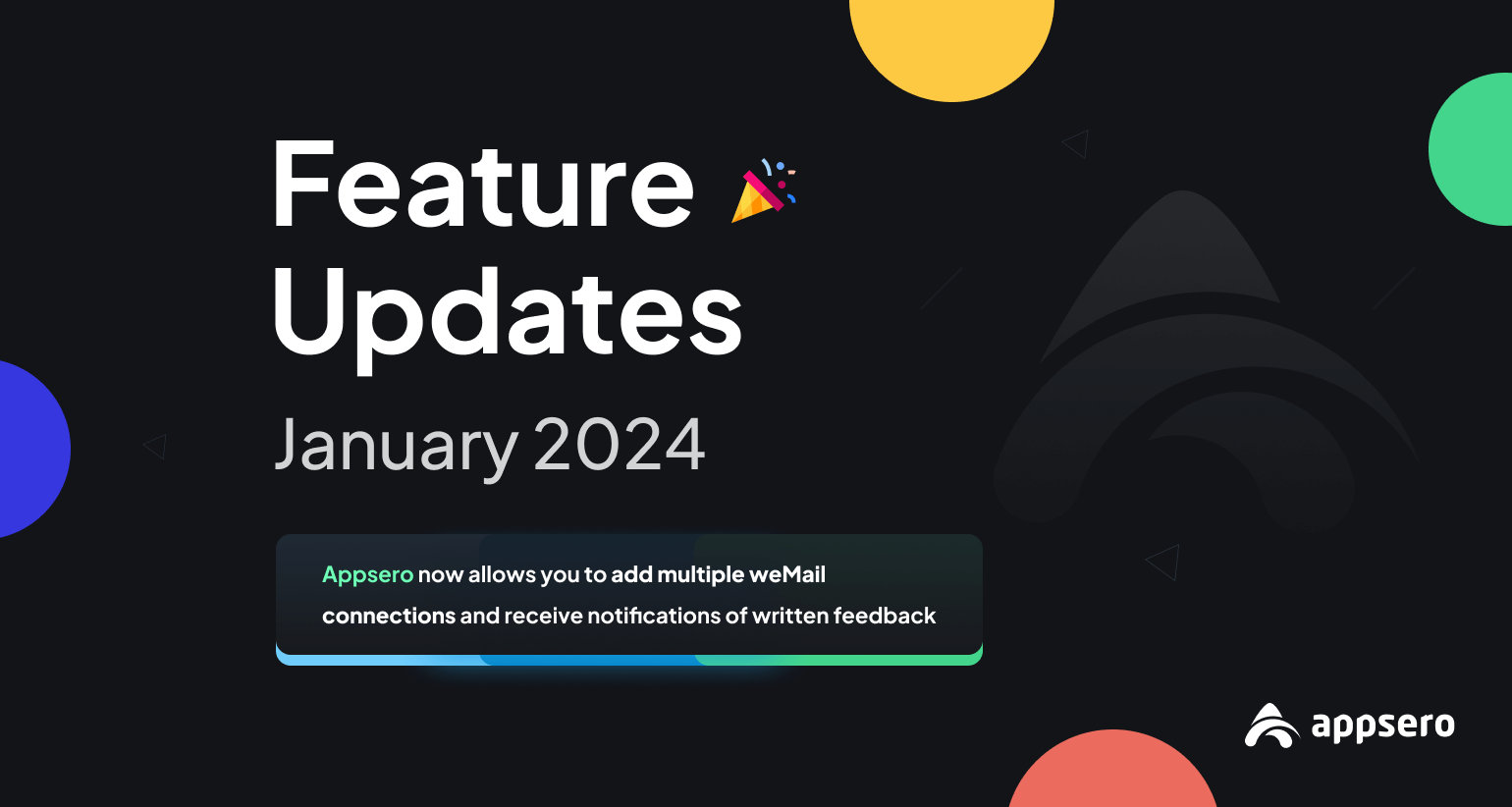
Exciting Feature Updates 🎉: Appsero Now Allows You to Add Multiple weMail Connections and Receive Notifications of Written Feedback
At Appsero, our dedicated team has been working tirelessly to refine your experience with our WordPress analytics, licensing, and deployment tool. We’ve implemented numerous enhancements throughout the year, addressed various issues, and rolled out exciting features to elevate your journey.
Today, we’re thrilled to unveil two new and significant features that represent our commitment to excellence. Now you can add multiple weMail connections right from your Appsero dashboard and receive written deactivation feedback straight in your inbox. Let’s explore the new features with us.
A quick look at the new Appsero features
Appsero consistently introduces innovative features to meet the increasing demands of its user base. It eliminates the guesswork and helps developers understand why some product features are not working as intended. Let’s learn about the new Appsero features from our quick overview.
1. Connect multiple weMail instances

Appsero integrates well with weMail, a great tool to expand your subscriber base and send all types of marketing emails —all from the convenience of the WordPress dashboard. This combination lets you gather telemetry data and automatically add users’ email addresses to the list in weMail.
With this release, you can now connect more than one weMail instance and associate it with your WordPress product. Whether it’s a global connection or a plugin from another website, the new feature allows connecting to a different weMail API along with the existing global connection.
2. Forward deactivation emails for written feedback

Appsero allows users to gather a few preset deactivation reasons along with manually written feedback as auto-responder messages. Previously, Appsero used to trigger deactivation email notifications for all feedback regardless of the type. Now you can enable the deactivation emails only for genuine written feedback.
The recent feature release ensures you don’t lose valuable feedback amidst the chaos. It lets you collect authentic written feedback regarding your WordPress products. This information empowers your support team to gain insights directly from users, and the development team can promptly address critical issues.
How to connect a new weMail API from the Appsero dashboard
It’s very easy to get started with the weMail configuration. The steps are as follows:
Step 1: Navigate to your plugin: Log in to your Appsero dashboard and navigate the Plugins section. Choose the project for which you’ll add the new weMail instance.
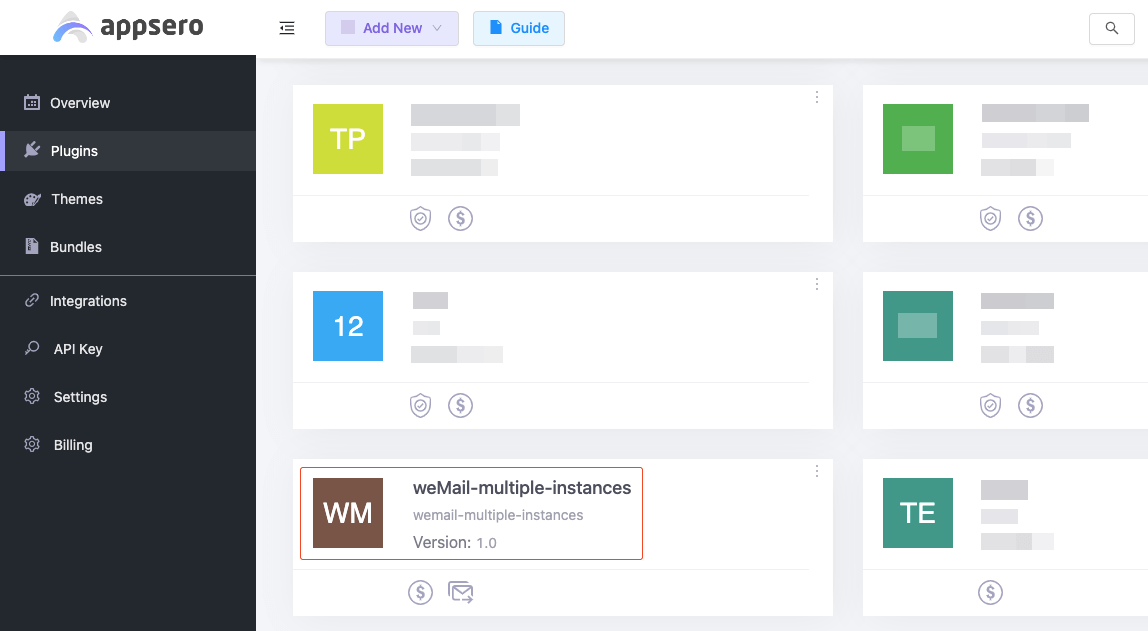
Step 2: Configure or connect the weMail API: After entering your project you’ll see all available options in the left sidebar. Click on Integrations, scroll to the “Mail Integrations” part, and locate weMail. You need to connect weMail with Appsero if not done beforehand.
If it’s already added then you can set up the new weMail connection by clicking on the Configure button. Click on the “Use new weMail connection” area, give a name to the API, and paste the weMail API in the designated field.

Step 3: Create the new weMail API key: If you don’t know how to create a weMail API key, this step will help. Go to your WordPress admin panel and navigate to weMail from the admin sidebar. Go to API Keys and click on the Create API Key button. Give a name to the API token. Then copy the generated API to paste it inside Appsero (as shown in the previous step).
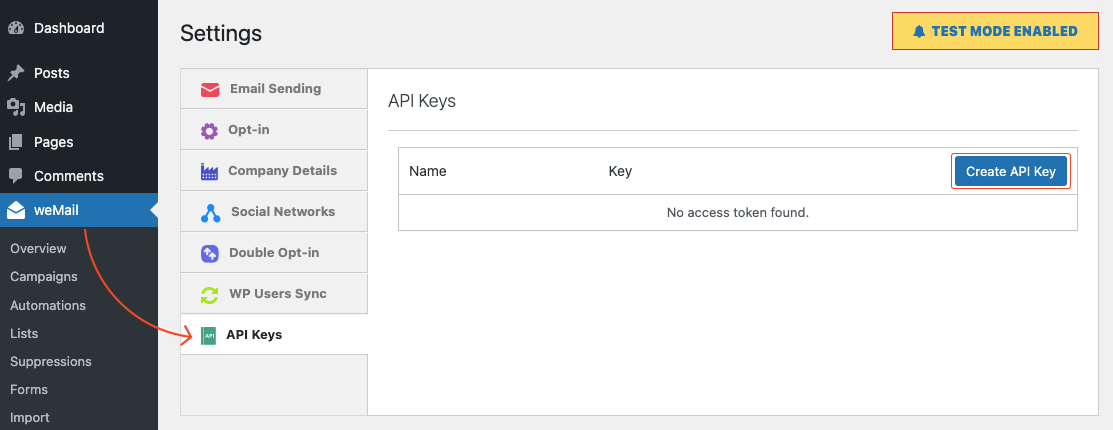
Step 4: Enable weMail, select lists, and input tags for the new instance
Upon successful connection, you need to enable weMail, select the email list, and add tags for activated and deactivated states. Then hit the Save button to make the changes. Your new weMail connection is ready to roll.
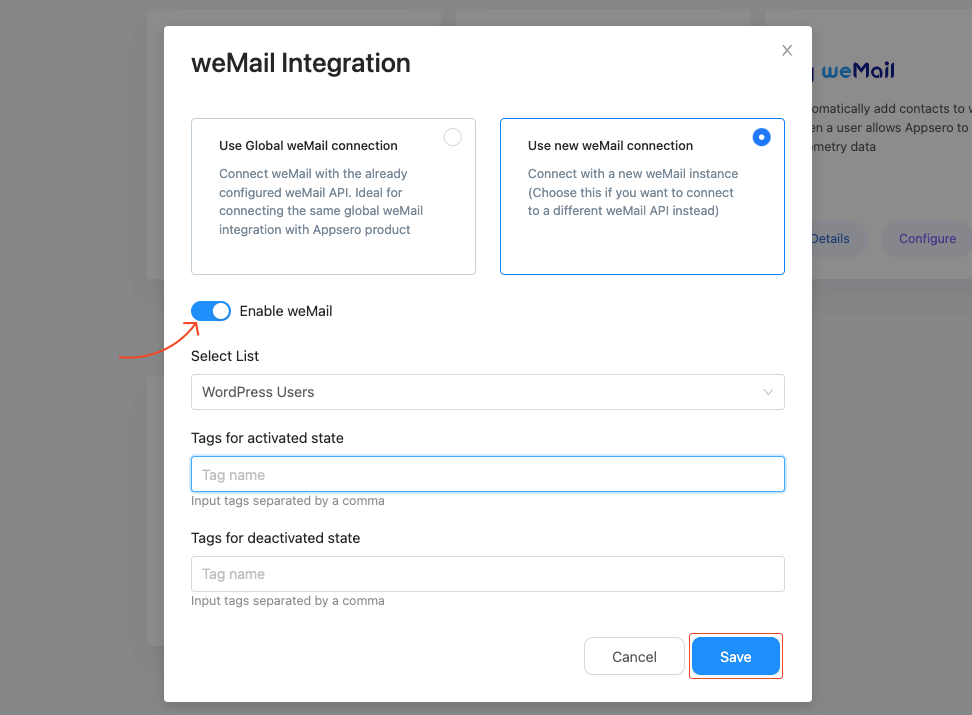
Note: If you don’t activate the new weMail connection, the global connection remains in effect.
How to enable deactivation email for written feedback
Enabling the deactivation email through the Appsero dashboard is a piece of cake. Go to the project you want to work with. Choose Deactivation from the left sidebar. It will take you to the configuration page. Enable the deactivation email by turning on “Enable Forward Deactivations Email“.
Then, turn the toggle on for “Only forward emails when users leave legitimate written feedback” as well. You can enter multiple email addresses separated by commas. This will send emails to any destination upon plugin deactivation with written feedback.
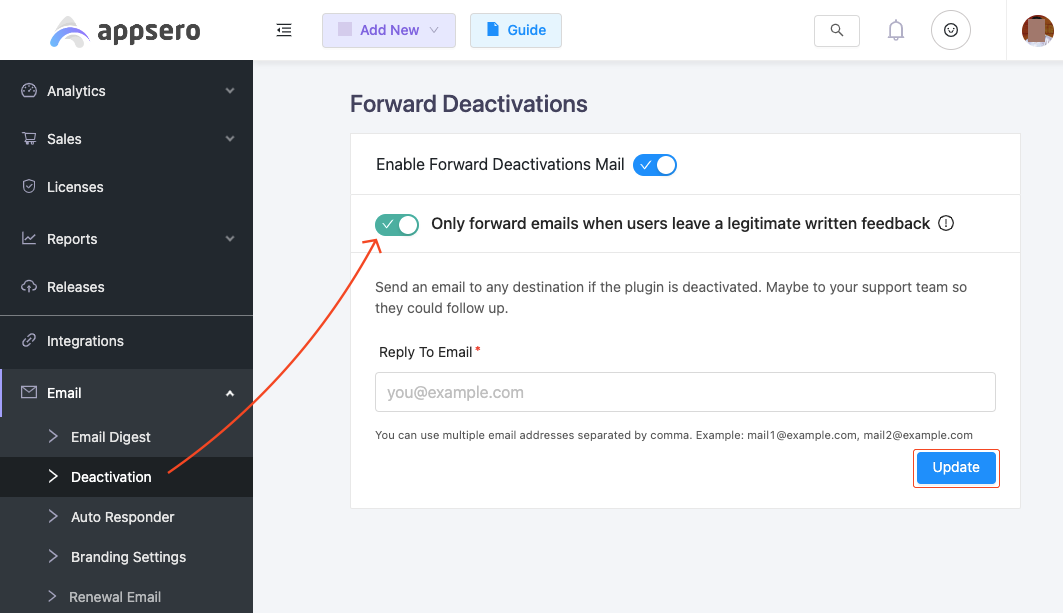
Note: Appsero will forward only those deactivations that come with genuine written feedback from users. Users can provide manual feedback by selecting the “Other” category during deactivation, and only such deactivations will be forwarded.
Update your SDK to make the most of all Appsero features
We’ve not only introduced additional features but also resolved various issues for an enhanced experience. Appsero SDK is now split into two: The regular Appsero Client and the Client Updater. This was done to maintain WordPress org guidelines that free plugin updates should be managed by WordPress org itself.
If you are using Appsero to manage free plugins, you should update to the latest version of SDK to avoid violation of WordPress org rules. If you are using Appsero to manage any premium plugins, then you have to implement the Appsero Client Updater along with the SDK.
So, it’s time to update your Appsero SDK. We’ve rolled out a new version to unlock these fresh features. You have three options to update the Appsero client:
- Manually download the repository and replace existing files.
- Use the composer update command.
- Execute the “git pull” command.
Also, you can consider implementing the Appsero Client Updater inside your plugin for efficient management of Pro WordPress Products. For any feedback or queries, don’t hesitate to let us know in the comment section.
Learn more from our Appsero Developers Guide
Learn more about Appsero: Why you should choose it
Appsero streamlines and simplifies the often tedious and complex tasks associated with license management, version releases, and other deployment processes. It significantly enhances your workflow, making your professional life notably smoother. It helps WordPress developers like you in the following ways:
- Accelerated plugin deployment, three times faster, via GitHub, Bitbucket, and Gitlab.
- Intelligent collection and presentation of plugin and theme usage data.
- License management capabilities with WooCommerce, EDD, FastSpring, Envato, and other integrations.
- Seamless integration with essential tools such as Mailchimp, HelpScout, and others.
- Unlimited addition of themes and plugins for enhanced flexibility.
That’s not all, you can get a comprehensive overview of your products’ overall performance from the Appsero dashboard. It comes with the ability to manage an unlimited number of free plugins, themes, and bundles with the free version, remaining free until license management is required.
Subscribe To Our Newsletter
Don’t miss any updates of our new templates and extensions
and all the astonishing offers we bring for you.




